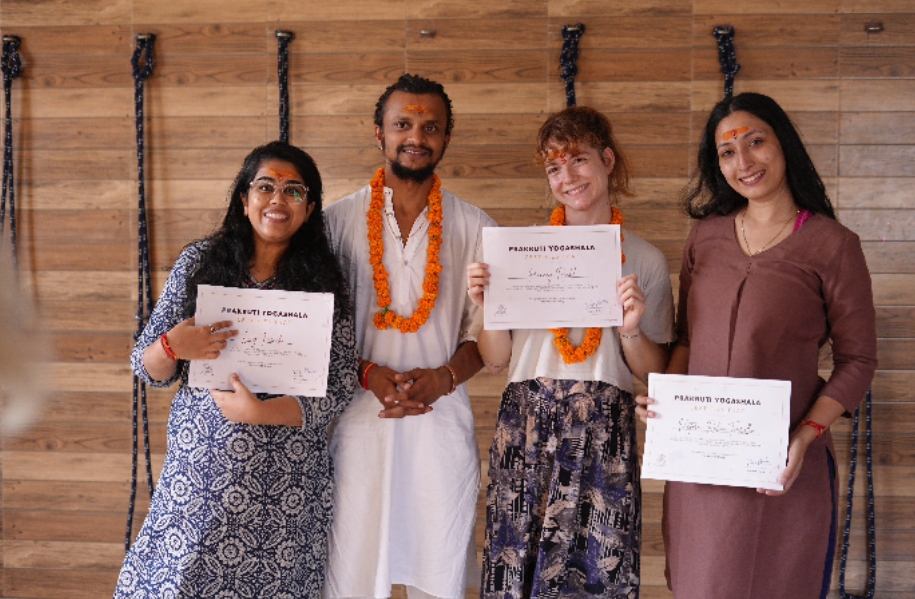Stepping into a 200-hour yoga teacher training course can change more than the body; the heart and mind grow just as visibly. Some choose the path to teach; others want to enrich a personal journey. Either way, this training plants the seeds for yoga to be a lifelong companion.
If the course is catching your eye, here’s a closer scoop.
1. Guided and Inspiring Container
The training itself is a small, velvety universe—usually 3 to 6 weeks, if you like the full-bloom pattern, or stretched out for 3 to 6 months if you want a more garden-paced route. However, you choose, the curriculum hums with rhythm: asana, anatomy, philosophy, teaching principles, and silent sitting all rotate like the wheels of a glowing mandala.
You’ll wake with the sun or before, perhaps starting with a few quiet rounds of breath. Then the sequence might flow into asana practice, a sprinkle of theory, intentional chatting in small circles, and, if the day is long, a candlelight closing. Hold tight to your water bottle and your open heart, because the days stretch, exhale, and stretch again into quiet and glowing.
2. Deep Dive into Asanas and Alignment
At the heart of this training lies the intimate study of physical postures. Together, we will go beyond demonstration, turning each pose into a lesson you can carry into the studio. Instructors will unpack alignment principles, therapeutic intentions, key modifications, and subtler advantages, illuminating each as the living art that it is.
Daily partner work and guided adjustments will ground you in your own body and sharpen your voice as a teacher. You’ll move fluidly into sequencing workshops, where we’ll map a cohesive class, weaving pranayama, theme, and pacing into a single, transformative narrative.
3. Understanding Yoga Philosophy
Because true yoga stretches beyond motion, this 200-hour immersion devotes ample study to the lived wisdom of the tradition. With the Yoga Sutras, the Bhagavad Gita, and the eightfold path as core texts, we will contemplate how the principles of yoga manifest in everyday choices shaped by karma, dharma, and the workings of the chakras.
The insights we gather will refract in your voice as the class weaves toward shared silence, guiding each student to a larger sense of connection and self.
4. Anatomy and Physiology
An ethic of safety chooses anatomical insight as a prerequisite. Through the lens of asana you will observe the interdependence of muscle, joint, and visceral systems, learning when to nudge and when to release. Guided models, movement labs, and questioning labs will train your eye and your hands—so that you may teach with the precision born of confident embodiment.
This knowledge equips you to prevent injuries, offer tailored modifications, and meet the varied needs of every student.
5. Practice Teaching and Feedback
Teaching is woven into the course from the very start. You and your fellow trainees rotate leading portions of class, honing your voice, discovering how to structure sequences, giving precise cues, and holding the room with confidence. By the concluding week, each trainee will teach a complete class to peers, receiving gentle, constructive feedback that fine-tunes your unique style and steadies your nerves.
6. Personal Transformation and Community
More than sequences and anatomy, the training cultivates deep inner change. Students report emotional releases, heightened mental clarity, developed discipline, and a tangible sense of inner stillness. Bonds forged over shared breakfasts and late-night study groups often blossom into enduring friendships, forming a network that continues to motivate and uplift long after graduation.
7. Certification and What Comes Next
Complete the program and you’re awarded a 200-hour certificate, usually recognized by Yoga Alliance, depending on the studio. With this credential, you’re prepared to teach in studios, gyms, private homes, or the ever-growing landscape of online classes.
Some new teachers step straight onto the studio floor, others choose to deepen their understanding through another 300-hour program or dive into specialized studies, perhaps investigating the subtleties of prenatal yoga, the art of yoga therapy, or the holistic lens of Ayurveda.
Final Thoughts
A 200-hour yoga teacher training in Rishikesh is never merely about earning a certificate; it is an inward pilgrimage capable of redefining how you converse with your own mind and how you encounter the rest of creation. The schedule is demanding, the mirror of self-discipline is at times uncomfortable, yet the rewards are quietly, profoundly luscious.
Whether you ultimately stand in front of a class or find strength in your own practice, the music the course plays in your nervous system continues privately, softly, long after the asanas are neatly packed away.



